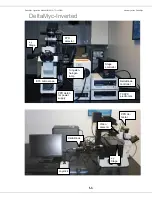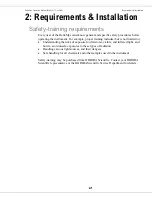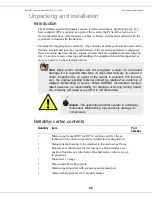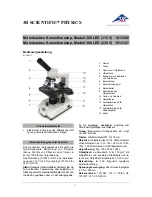
DeltaMyc Operation Manual J810018 (7 Oct 2014)
Introduction
0-10
The skin and eyes absorb infrared radiation (IR) as heat. Workers normally notice ex-
cessive exposure through heat sensation and pain. Infrared radiation in the IR-A that
enters the human eye will reach (and can be focused upon) the sensitive cells of the ret-
ina. For high irradiance sources in the IR-A, the retina is the part of the eye that is at
risk. For sources in the IR-B and IR-C, both the skin and the cornea may be at risk from
“flash burns.” In addition, the heat deposited in the cornea may be conducted to the lens
of the eye. This heating of the lens is believed to be the cause of so called “glassblow-
ers’ ” cataracts because the heat transfer may cause clouding of the lens.
Retinal IR Hazards (780 to 1400 nm): possible retinal lesions from acute high irra-
diance exposures to small dimension sources.
Lens IR Hazards (1400 to 1900 nm): possible cataract induction from chronic lower
irradiance exposures.
Corneal IR Hazards (1900 nm to 1 mm): possible flashburns from acute high irradi-
ance exposures.
Who is likely to be injured? The user and anyone exposed to the radiation or lamp
shards as a result of faulty procedures. Injuries may be slight to severe.
Содержание DeltaMyc J810018
Страница 2: ......
Страница 6: ...DeltaMyc Operation Manual J810018 7 Oct 2014 iv...
Страница 18: ...DeltaMyc Operation Manual J810018 7 Oct 2014 Introduction 0 12...
Страница 72: ...DeltaMyc Operation Manual J810018 7 Oct 2014 USB Port Configuration 5 2...
Страница 80: ......
















































